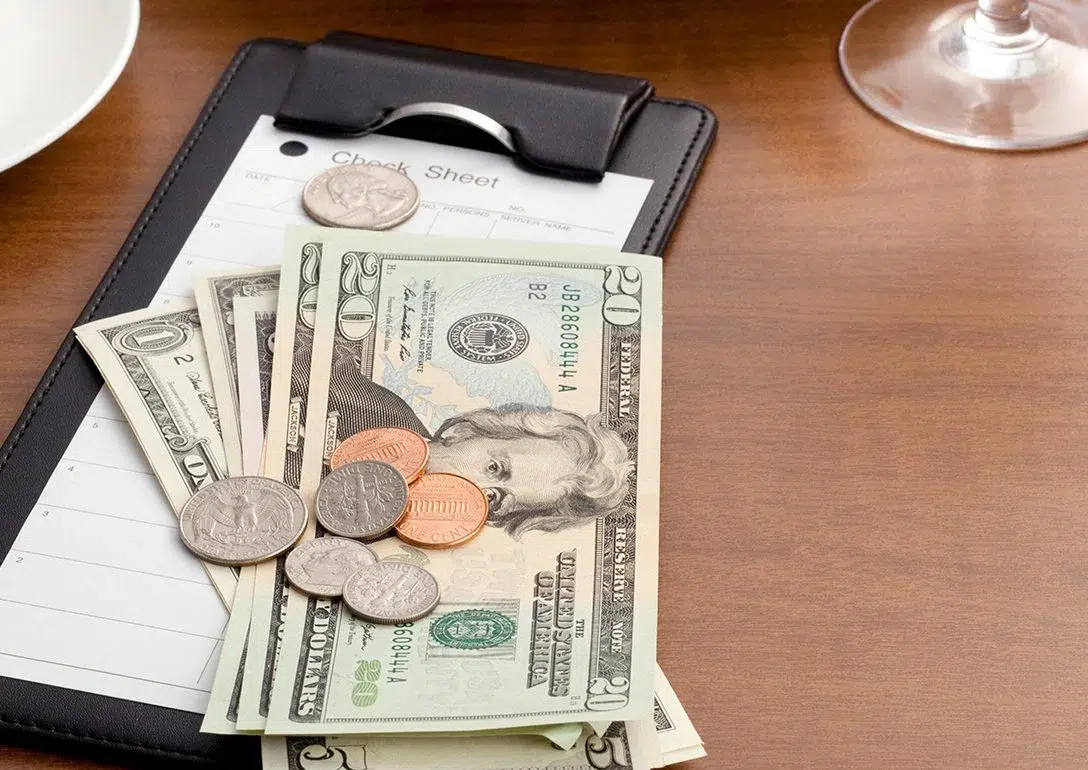Trends in how restaurants handle policies in tipping have been on a roller coaster ride in the last few years.
For example, in 2015, restaurateurs – like the famous Danny Meyer – eliminated tipping entirely.
In 2018, as a result, it was reported that many front of the house staff left Meyer’s Union Square Hospitality establishments.
Then in 2020, due to the pandemic, the tipping policy was brought back.
When it comes to tipping at restaurants, it’s common knowledge that customers tip your servers, bartenders, or staff based on the amount of the bill and how they handled their service.
But some restaurants try to go in a different directions with a no-tipping policy. This is an effort to provide staff with more stable pay and create more balance among the staff. Also, restaurants are trying the no-tipping model because they feel customers go through “tipping fatigue.”
We take a look at the pros and cons of the tipping model. What works best for you? These tips (pun intended) make it easy to choose the system that will keep your customers satisfied, your employees happy, and your business in the black.
Tip-Top Tips
Tipping is not a universal practice. Americans tip more, and more often than guests in most other countries. In her Forbes column, Micheline Maynard writes “Americans, especially, prize the right to determine how much they pay for something, especially service. And while tip jars abound at no-frills restaurants, like coffee bars and bakeries, it’s ultimately their choice whether to slip in a dollar or skip a tip.”
Pros of Tipping
- You are only responsible for paying servers an amount below minimum wage, with the assumption that they will make up the difference with tips.
- Your staff is motivated to provide excellent service, with the added incentive of higher tips from happier guests.
- This system has been in place a long time – some sources date it back to the 18th century. American servers and diners alike are familiar with standard tipping policies.
- It’s customary for a tip to be a percentage of the ticket price. This encourages servers to up-sell menu items, in hopes of a bigger tip – boosting your profit along with their income.
Cons of Tipping
- Servers make a less predictable income. This can increase staff turnover, as people seek out more stable jobs, especially if your servers consistently deal with bad tippers.
- If servers are unable to make up the difference between their salary earned from you and the legal minimum wage through tips, you may (depending on your state) be responsible for paying them the difference.
- While some guests tip more or less depending on the quality of service, some will tip a set percentage no matter how satisfied they are. This practice can lower employee morale, and make it difficult for servers to earn a living wage.
No Tips Needed
This business model relies on higher ticket prices – it’s standard to raise the cost of menu items by 21-25% to make up the difference. That percentage mostly goes to increase wages, so you may not see an immediate increase in revenue – but it will pay dividends in staff loyalty and morale.
Pros of a No-Tip Policy
- No-tip policies represent a growing trend. Restaurants across the country are experimenting with this model, and seeing various levels of success. Guests may be excited to try a brand-new way of dining.
- Raising ticket prices allows restaurant operators to raise wages for all employees, including servers, barbacks, and kitchen staff. Higher wages increase employee loyalty and morale.
- Stable wages decrease staff turnover. This model isn’t for everyone (at least not yet), so you may lose some servers during the transition – but the ones who stay will stay for a long time.
Cons of a No-Tip Policy
- American servers and guests are new to this model; you may need to include notes on the website, menu, and even the check explaining how tips work in your restaurant.
- Some critics are concerned that without tips, staff will be less motivated to provide great service.
- Many servers work in the restaurant industry because of its flexible hours. Work the dinner rushes on Friday and Saturday, and you just might be able to take the rest of the week off. Without tips, some of that freedom disappears as well. Every shift is equally profitable, so more servers may have to work 40-hour weeks.
Finding the right tipping model means taking a good look at your restaurant and staff. Consider how each solution might affect your team, without straining employee income or your guests’ budgets, before implementing a new tipping policy at your restaurant.
Note: This post has been updated on Aug. 16, 2022.







